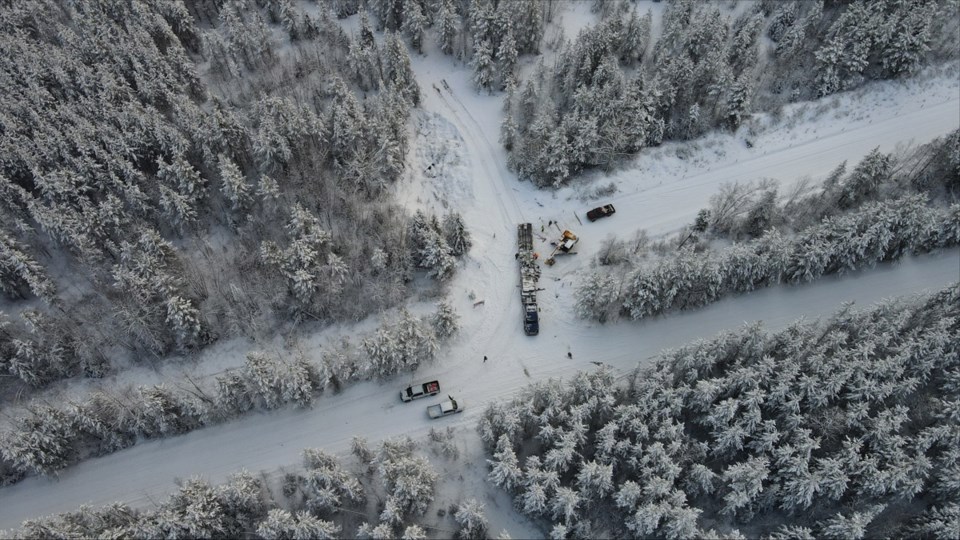Rogers Communications has started construction on the first of 12 planned cellular towers along Highway 16 between Prince George and Prince Rupert, the company announced on Wednesday.
Once complete, the project will provide cellphone coverage to an additional 252 kilometres of the highway, also known as the Highway of Tears.
“At Rogers, we are deeply committed to reconciliation and to using our technology to help connect rural, remote and Indigenous communities,” Rogers chief technology officer Jorge Fernandes said in a press release. “It is our hope that by providing the safety of wireless connectivity along Highway 16, we can honour survivors, victims and their families and communities by taking action to address the tragic crisis of murdered and missing Indigenous women and girls here for the past many decades.”
The project is expected to provide continuous cellphone coverage along the 720 km stretch between Prince George and Prince Rupert, fulfilling one of the recommendations of the 2006 Highway of Tears Symposium report.
“It means the world to me and our women to connect with others and keep in touch, especially on this highway – anything can happen at any given time,” said Gladys Radek, an activist working to raise awareness about the missing and murdered women along Highway 16 and across Canada. “This tower and project will bring a lifeline to all of us who travel along Highway 16 regularly and will bring a sense of safety and security that will help us prevent future tragedies.”
In addition, Rogers is sponsoring two totem poles to be placed at each end of the Highway of Tears. The Two Sisters totem poles will be erected in Prince George and Prince Rupert at part of the Highway of Tears Commemoration and Healing Totem Pole series.
The totem pole series, initiated by the families of missing and murdered women and the Indian Residential Schools Survivors Society, will provide places where families can commemorate lost loved ones.
A portion of the funding for the project was provided by the provincial and federal governments, though the federal Universal Broadband Fund and the Connecting British Columbia program.
“As a local resident and frequent traveller on Highway 16, I know how important this project is for people living, working and travelling along this route,” North Coast MLA Jennifer Rice said in a press release. “Our government is pleased to be able to help fund this project, which helps fulfil recommendations from the Highway of Tears Symposium, and completion of the project will be a welcome reassurance for families and communities in our region.”
In November, Rogers announced a partnership with the Coastal First Nations to develop five new cell towers on Haida Gwaii. The towers will provide 100 km of additional coverage along Highway 16 from Masset to Port Clements to Queen Charlotte.


